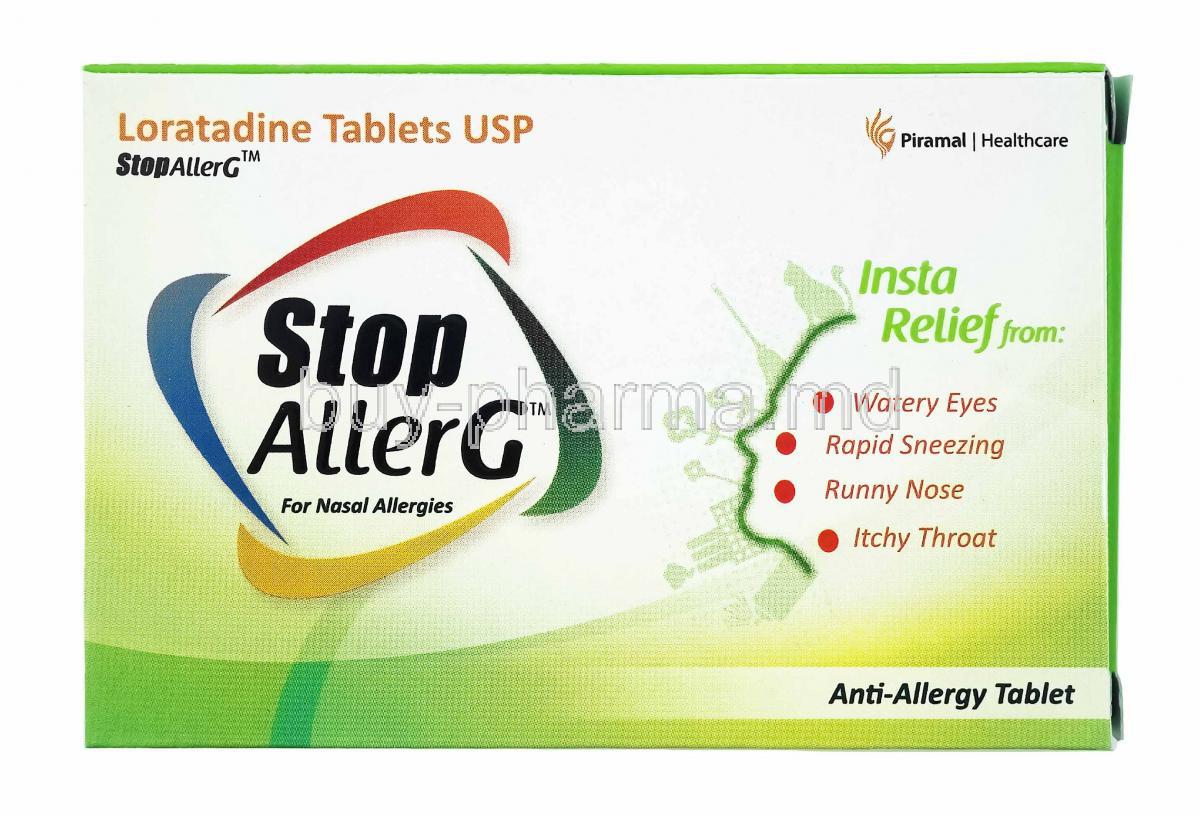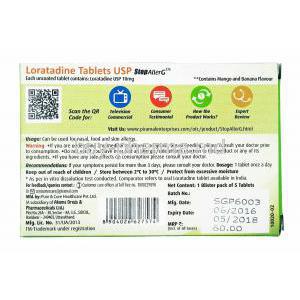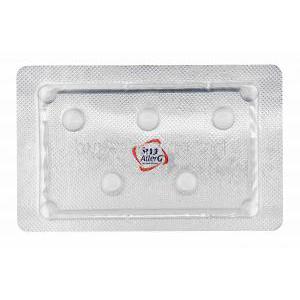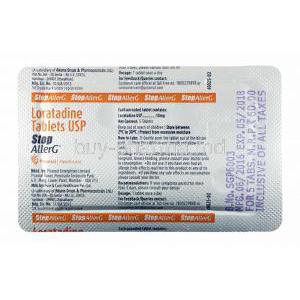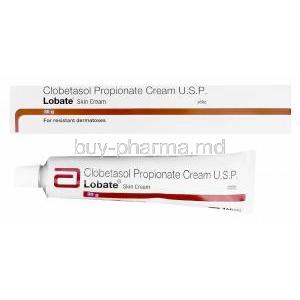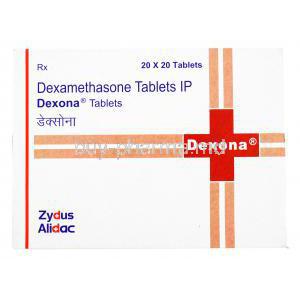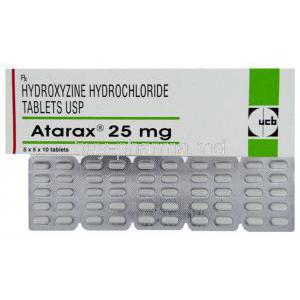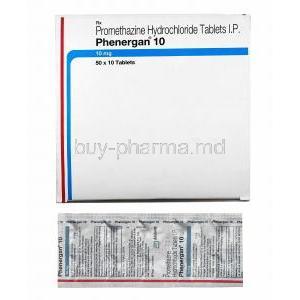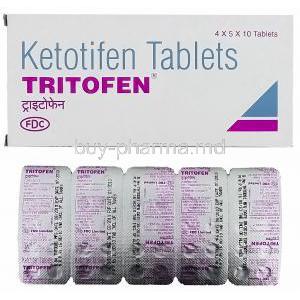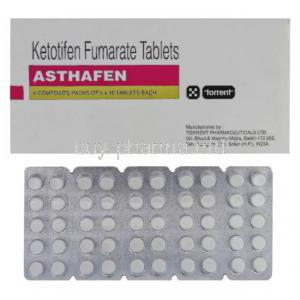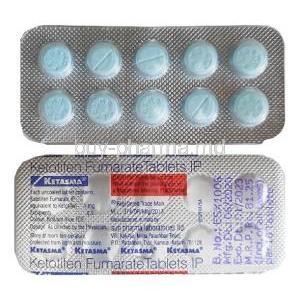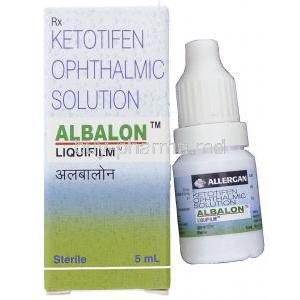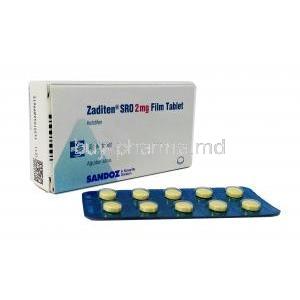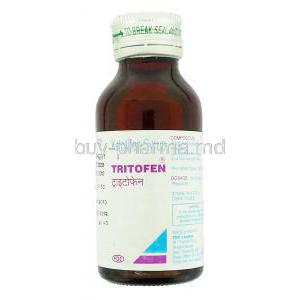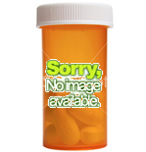Stop AllerG, Loratadine
- Introduction
- Overview of Stop AllerG, Loratadine
- Classification as a Second-Generation Antihistamine
- General Importance in Allergy Management
- Composition and Formulation
- Comparative Insights
- Practical Usage Notes
- Safety and Tolerability
- Mechanism of Action: How It Works
- Approved Uses
- Off-Label Uses
- Dosage and Administration
- Standard Adult Dosage Guidelines
- Pediatric Dosing Recommendations
- Loratadine Maximum Dosage
- Special Considerations for Hepatic or Renal Impairment
- Timing of Administration (With or Without Food)
- Best time to Take Loratadine
- Loratadine Dosage by Weight
- Loratadine for Dogs Dosage Chart
- Loratadine Dosage for Adults
- Loratadine Maximum Dosage for Adults
- Administration in Special Populations
- Side Effects
- Loratadine Drug Interactions
- Contraindications
- Warnings and Precautions
- Careful Administration Guidelines
- Important Precautions
- Overdosage
- Handling and Storage Precautions
Introduction
Allergies, whether they manifest as seasonal sniffles or recurring hives, can significantly disrupt daily life. The most effective, evidence-based strategy for regaining control relies on a safe yet potent antihistamine that avoids sedation. Loratadine (found under various brand names like Stop AllerG) is a prime example of this modern approach.
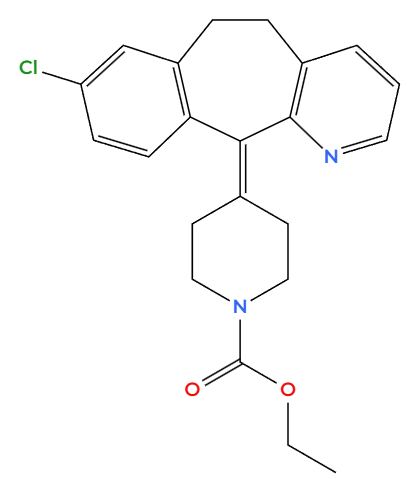
This drug provides rapid symptom relief—quickly quelling sneezing, a runny nose, and nagging itch—while crucially maintaining mental clarity and daytime function. Unlike older compounds that often caused drowsiness by penetrating the central nervous system, Loratadine's formulation successfully dampens histamine's antics without causing the same side effects. Its convenient once-daily dosing further boosts adherence, ensuring consistent symptom management. In short, Loratadine offers quick relief and sustains normal function with a simple regimen.
Overview of Stop AllerG, Loratadine
Loratadine, marketed under brand names like "Stop AllerG," is a peripheral H1-receptor antagonist that effectively manages allergy symptoms. Its core function is to out-compete histamine for receptor sites, thereby dousing the allergic cascade that causes symptoms like nasal congestion, itchy eyes, and skin irritation. Although specific product formulations may vary by region, the active pharmacological ingredient remains consistent. Loratadine's primary advantages are its reliable absorption and its alertness-preserving profile. Because it avoids the side effects and drowsiness associated with older, first-generation antihistamines, patients can safely drive, study, and work without impairment.
Classification as a Second-Generation Antihistamine
Second-generation antihistamines are specifically engineered to remain active in the periphery of the body, avoiding the central nervous system. This is achieved through their lower fat solubility (lipophilicity) and how they are managed by efflux transporters like P-glycoprotein, which limits their brain penetration. Consequently, they cause significantly less sedation and psychomotor impairment compared to older, first-generation drugs like diphenhydramine and chlorpheniramine.
The core design philosophy is to provide effective treatment for conditions such as rhinitis, conjunctivitis, hives, and itching (by antagonizing H1 receptors in tissues) while successfully sidestepping the drowsiness that plagues earlier medications.
General Importance in Allergy Management
Effective allergy care is a step-by-step process involving multiple tactics, such as avoiding triggers, using saline rinses, and following a targeted treatment plan. For many patients, loratadine serves as the simple, durable, and well-tolerated backbone of this plan, making it a reliable first-line choice. While persistent or severe symptoms may require clinicians to adjust the treatment (by adding corticosteroids, changing the dosing schedule, or trying different antihistamines), loratadine remains the foundational and preferred starting point for a broad range of allergy sufferers.
Composition and Formulation
Active Ingredient: Loratadine
After ingestion, Loratadine is rapidly absorbed and then converted by the liver (via enzymes CYP3A4 and CYP2D6) into its long-acting and active form, desloratadine. This metabolite is crucial because it drives the drug's effect, allowing for a full 24 hours of relief for most users.
The drug's key features include:
- Quick Onset: Relief typically begins within one to three hours, though some people feel better sooner.
- Duration: A single dose provides 24-hour coverage.
- Low Sedation: It causes minimal drowsiness, especially when compared to older, first-generation antihistamines.
Inactive Ingredients and Excipients
The non-active ingredients, or excipients, in Loratadine products vary based on the manufacturer and the dosage form (tablet vs. syrup). Tablet formulations often use a matrix of ingredients like microcrystalline cellulose, lactose monohydrate, maize starch, povidone, and magnesium stearate. These are necessary for compressibility, stability, and proper disintegration of the pill. Conversely, liquid or syrup formulations typically contain glycerin, sorbitol, flavoring agents, and purified water to ensure stability and palatability.
Regardless of the form, the final product's quality is judged by its consistent content and its dissolution profile (how quickly it breaks down). Individuals with intolerances or sensitivities (especially to certain dyes) should always carefully review the product label before taking the medication.
Available Forms: Tablets, Syrup, Dispersible Tablets
Loratadine is available in several forms to accommodate patient preference and need, ensuring flexible delivery of the medication. The common conventional tablets are typically suitable for adults and teenagers who prefer a standard, once-daily dose. For children or anyone who has difficulty swallowing (dysphagia), a liquid syrup is available, which is a popular choice because its volume can be easily adjusted (titrated). Finally, orally disintegrating tablets offer a convenient alternative; these break down instantly on the tongue, eliminating the need for water.
Comparative Insights
Loratadine vs Cetirizine
Both Loratadine and Cetirizine are effective second-generation antihistamines used to treat allergic rhinitis (hay fever) and urticaria (hives). While their overall efficacy is similar, Cetirizine may have a slight advantage in quelling itch, especially in persistent hives, though it tends to cause some sleepiness in people prone to drowsiness. Loratadine, in contrast, is the preferred choice for daytime use and situations where staying alert matters, as it generally lands lower on the drowsiness scale. Although the onset of action varies, Cetirizine may seem to kick in faster for some users.
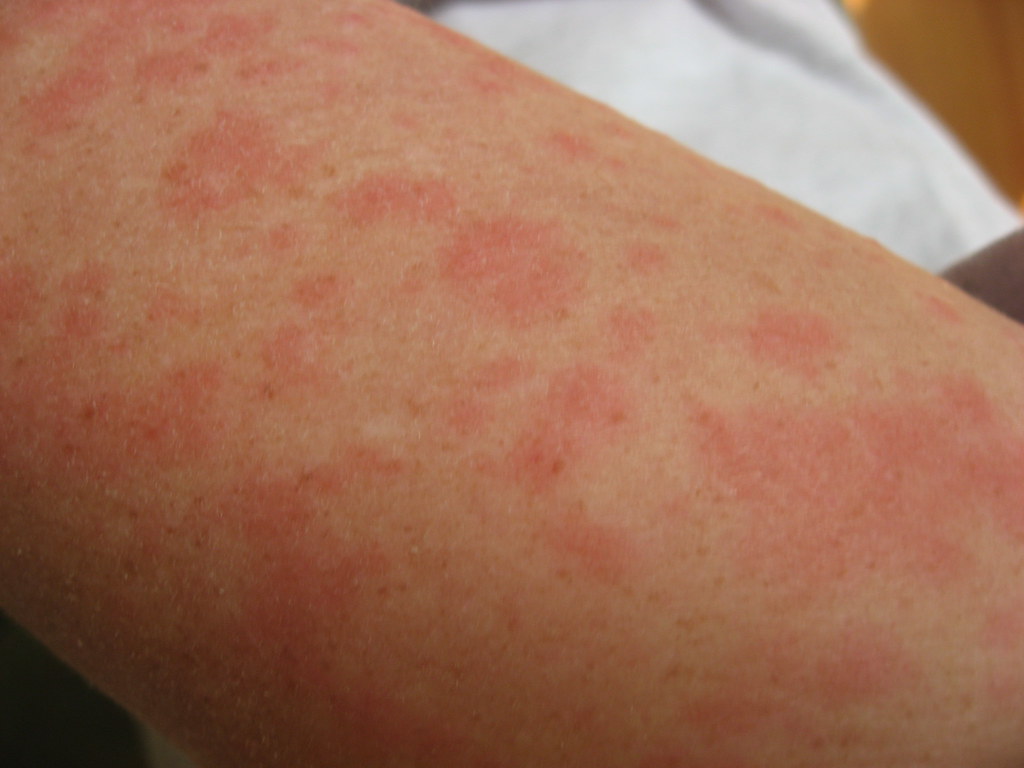
Fexofenadine vs Loratadine
Both Loratadine and Fexofenadine (which is a metabolite of terfenadine) are celebrated for their very low risk of drowsiness, though Fexofenadine is often considered to have the edge as the one that barely ever induces sedation due to its high peripheral selectivity. While Loratadine remains a low-sedating choice, it may not be completely inert in the nervous system for every individual.
Their key differences involve dosing and food interaction:
- Dosing: Both are commonly taken daily, but Fexofenadine is also available in twice-daily formulations.
- Food Effect: Loratadine’s absorption remains relatively stable, but consuming a high-fat meal or fruit juices can significantly reduce Fexofenadine’s uptake, making timing an important consideration for that drug.
Loratadine vs Diphenhydramine
Diphenhydramine, a typical first-generation antihistamine, provides rapid symptom relief but comes with a significant cost: strong sedative actions, leading to blunted psychomotor function and a short therapeutic window. It is typically reserved for acute, breakthrough, or motion-related allergy episodes.
Loratadine, in contrast, is the preferred choice for daytime control because it avoids these drawbacks. While Diphenhydramine can cause persistent issues like next-day grogginess and a dry mouth, Loratadine has a better safety profile. Furthermore, its once-daily dosing makes maintaining a regular treatment schedule simple and promotes better adherence.
Loratadine and Benadryl
It is generally advised to avoid habitually mixing two antihistamines, such as combining Loratadine with the first-generation drug Diphenhydramine (commonly known as Benadryl). Adding a second antihistamine rarely provides extra benefit and simply increases the drug load.
When patients truly require a layered approach to control severe symptoms, clinicians prefer to combine a non-sedating antihistamine (like Loratadine) with an intranasal steroid, rather than stacking two different types of antihistamines. Mixing antihistamines should be reserved for very specific, brief scenarios and only done under the guidance of a qualified healthcare provider.
Loratadine vs Zyrtec
The choice between Loratadine and Cetirizine (sold as Zyrtec) involves a trade-off between relief and alertness. Cetirizine generally provides slightly more effective relief for itching but also carries a higher risk of causing drowsiness. Ultimately, a patient's final choice largely depends on their personal response to the medication and how crucial it is for them to remain fully alert throughout the day.
Loratadine Pseudoephedrine
Combination products pair loratadine with the decongestant pseudoephedrine to create a hybrid treatment that simultaneously addresses histamine-related allergy symptoms and clears blocked nasal passages.
The primary advantage of this combination is a noticeable increase in airflow during severe congestion. However, users must be aware of the caveats: pseudoephedrine can potentially increase heart rate, raise blood pressure, and cause side effects like sleeplessness or a jittery buzz. Therefore, the optimal approach is to use these products in short bursts only during periods of severe congestion, rather than for continuous long-term management.
Loratadine vs Claritin
Claritin is simply the brand name for the drug loratadine; chemically, a 10 mg Claritin tablet contains the exact same active ingredient molecule as any generic 10 mg loratadine pill. The only real differences between the brand-name and generic versions lie in the filler substances (excipients), the price, and the manufacturer's specific quality-control measures.
Fexofenadine vs Loratadine vs Cetirizine
The three leading second-generation antihistamines each fill a distinct role in allergy treatment:
- Fexofenadine is the top choice for maximum alertness, carrying the lowest risk of drowsiness.
- Cetirizine is often most effective for treating itching and hives (urticaria).
- Loratadine provides reliable, low-sedation relief for rhinitis (hay fever) and is widely accessible.
Since individual responses to these drugs vary, trying them out sequentially is often the best way to determine which medication works best for a person.
Loratadine vs Allegra
Allegra (fexofenadine) is known for causing virtually no sedation, making it the top choice for alertness. However, it requires a stricter regimen, as its absorption can be hindered by certain fruit juices. Loratadine, by contrast, is more forgiving regarding meals and beverages, while still being a reliably gentle option that keeps alertness largely intact.
Fexofenadine Hydrochloride vs Loratadine
Both Loratadine and Fexofenadine hydrochloride are excellent choices for allergy relief during the day, as they minimize drowsiness and allow patients to maintain performance.
Fexofenadine is often praised for its superior profile regarding the central nervous system (CNS), virtually guaranteeing no sedation. However, Loratadine offers a full-day effect because the body converts it to the active metabolite, desloratadine, which allows for more flexible dosing times.
When considering safety and interactions:
- Both are generally safe for activities like driving and operating machinery, though individual responses should always be monitored.
- Loratadine users should be mindful of interactions with CYP3A4 inhibitors.
- Fexofenadine users must avoid fruit juices and cation-exchange antacids to ensure proper absorption.
Ultimately, the clinical goal for both drugs is achieving effective symptom control without sacrificing daily performance.
Practical Usage Notes
For effective allergy management, consistent daily dosing is paramount, especially when allergen exposure is high or symptoms persist. Take the medication at the same time each day, and monitor your response over several days. If symptoms remain uncontrolled, you'll need to adjust your overall approach.
Remember that medication works best when paired with fundamental care: proper nasal hygiene and adequate fluid intake help boost the drug's effectiveness. Crucially, avoiding the specific allergens remains the single most important pillar of your treatment strategy. Finally, be alert for serious signs like wheezing, facial swelling, or other systemic symptoms; these require immediate medical attention.

Safety and Tolerability
Loratadine generally has a very reassuring safety profile, with most patients experiencing only minor side effects such as an occasional headache, dry mouth, or mild fatigue. Serious adverse events are rare.
However, extra caution is necessary if the patient has kidney or liver impairment or if the drug is taken with strong CYP3A4 inhibitors. When using combination products that include the decongestant pseudoephedrine, it is prudent to screen patients for pre-existing conditions like hypertension, arrhythmias, or insomnia. Careful patient selection ensures the drug's therapeutic benefits clearly outweigh any potential risks.
Mechanism of Action: How It Works
Role as an H1-Receptor Antagonist
https://medlineplus.gov/druginfo/meds/a697038.html
Loratadine works as a selective antagonist by competitively blocking peripheral H1 receptors where histamine, released during an allergic reaction, normally binds. By occupying these receptor sites without activating them, Loratadine effectively intercepts the allergic cascade—preventing histamine from causing common symptoms like itching (pruritus), blood vessel dilation (vasodilation), and fluid leakage.
Crucially, unlike older antihistamines, Loratadine is designed with a minimal affinity for the central nervous system. This peripheral focus allows it to provide strong symptomatic relief—reducing sneezing, nasal discharge, and skin irritation—without causing noticeable psychomotor impairment. A single dose maintains this receptor blockade and therapeutic effect for approximately 24 hours.
Effect on Histamine Pathways
Histamine, a natural amine, is responsible for the classic symptoms of allergies, such as redness, swelling, and itching, which occur when it binds to H1 receptors and causes capillaries to widen, muscles to contract, and sensory nerves to fire. Loratadine works to temper these signals.
After the tablet is quickly absorbed, the liver converts it into its active, longer-lasting metabolite, desloratadine. This two-part strategy extends and deepens the H1 receptor blockade, effectively preventing the histamine-induced effects. By blunting swelling, suppressing nerve firing that causes itch and irritation, and curtailing the discharge of other inflammatory mediators, this approach maintains control over symptoms for patients dealing with allergic rhinitis or chronic hives.
Comparison with First-Generation Antihistamines (Reduced Drowsiness)
Older, first-generation antihistamines (like diphenhydramine and chlorpheniramine) easily cross the blood-brain barrier, leading to a triad of side effects: drowsiness, dizziness, and poor concentration.
Loratadine, a second-generation antihistamine, was specifically engineered to overcome these issues. Its design uses a low fat-solubility (modest lipophilicity) and the action of the P-glycoprotein pump to keep its exposure to the central nervous system minimal. This peripheral focus means it rarely occupies H1 receptors in the brain, resulting in a dramatically lower incidence of sleepiness.
Loratadine is a clear example of antihistamine evolution, offering robust, sustained relief with an excellent safety margin. It allows those suffering from allergies to remain mentally sharp and fully functional—making it perfect for anyone who needs to keep their wits about them during treatment.
Approved Uses
Allergic Rhinitis (Seasonal and Perennial)
Loratadine is the primary medication used to treat allergic rhinitis, effectively covering both seasonal (triggered by pollen) and perennial (year-round, caused by continuous exposure to things like dust mites or dander) forms. By blocking H1 receptors, it calms classic symptoms such as nasal congestion, runny nose, sneezing, and itchy eyes.
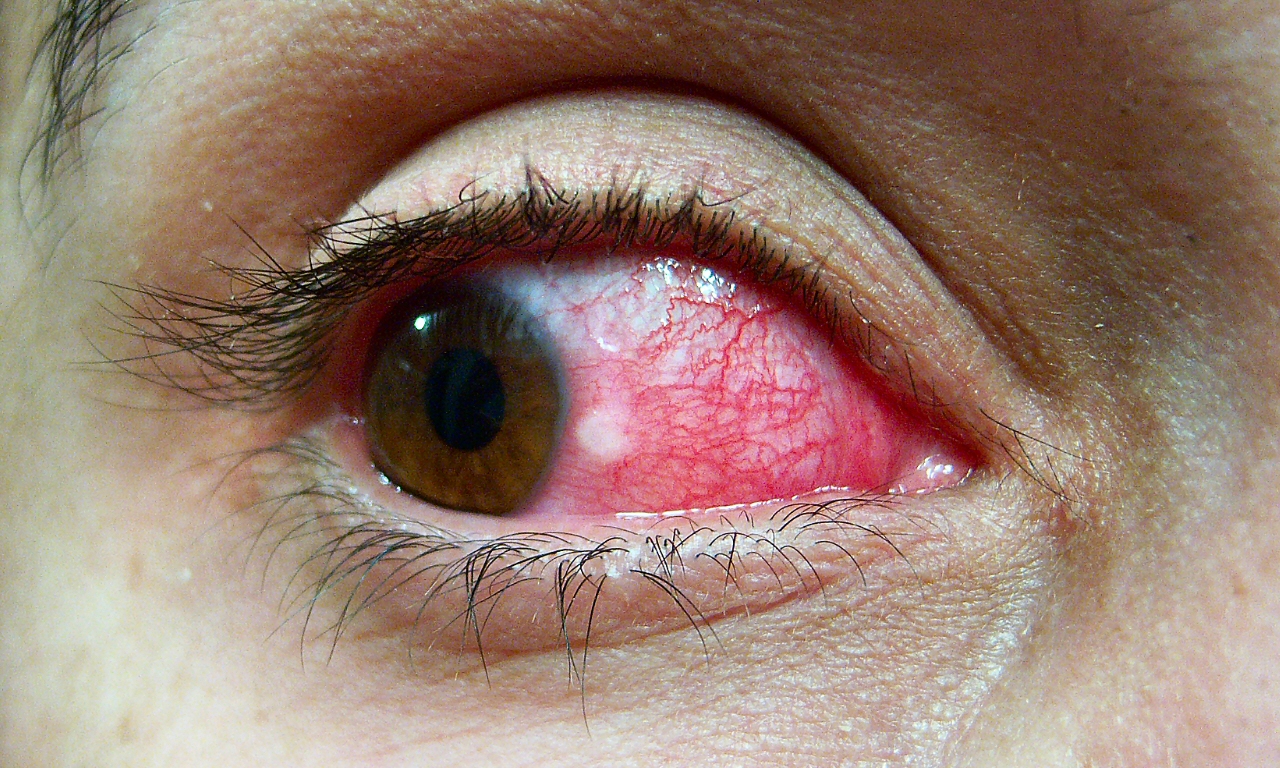
Thanks to its long half-life, a single daily dose provides uninterrupted relief by sustaining receptor blockade for a full day. This helps to unblock the nose, calm sinus pressure, reduce watery eyes, and soothe irritation. For those who work or need to stay productive, Loratadine is a significant boon; its non-sedating profile ensures that mental sharpness remains intact, and by diminishing congestion, it often leads to improved sleep.
Chronic Idiopathic Urticaria (Hives)
Chronic idiopathic urticaria (CIU) is characterized by recurrent hives that last longer than six weeks without a known cause. Loratadine plays an indispensable role in controlling these bouts, primarily by opposing the histamine-driven dilation of blood vessels and the subsequent activation of sensory nerves that cause the hallmark itching and redness.
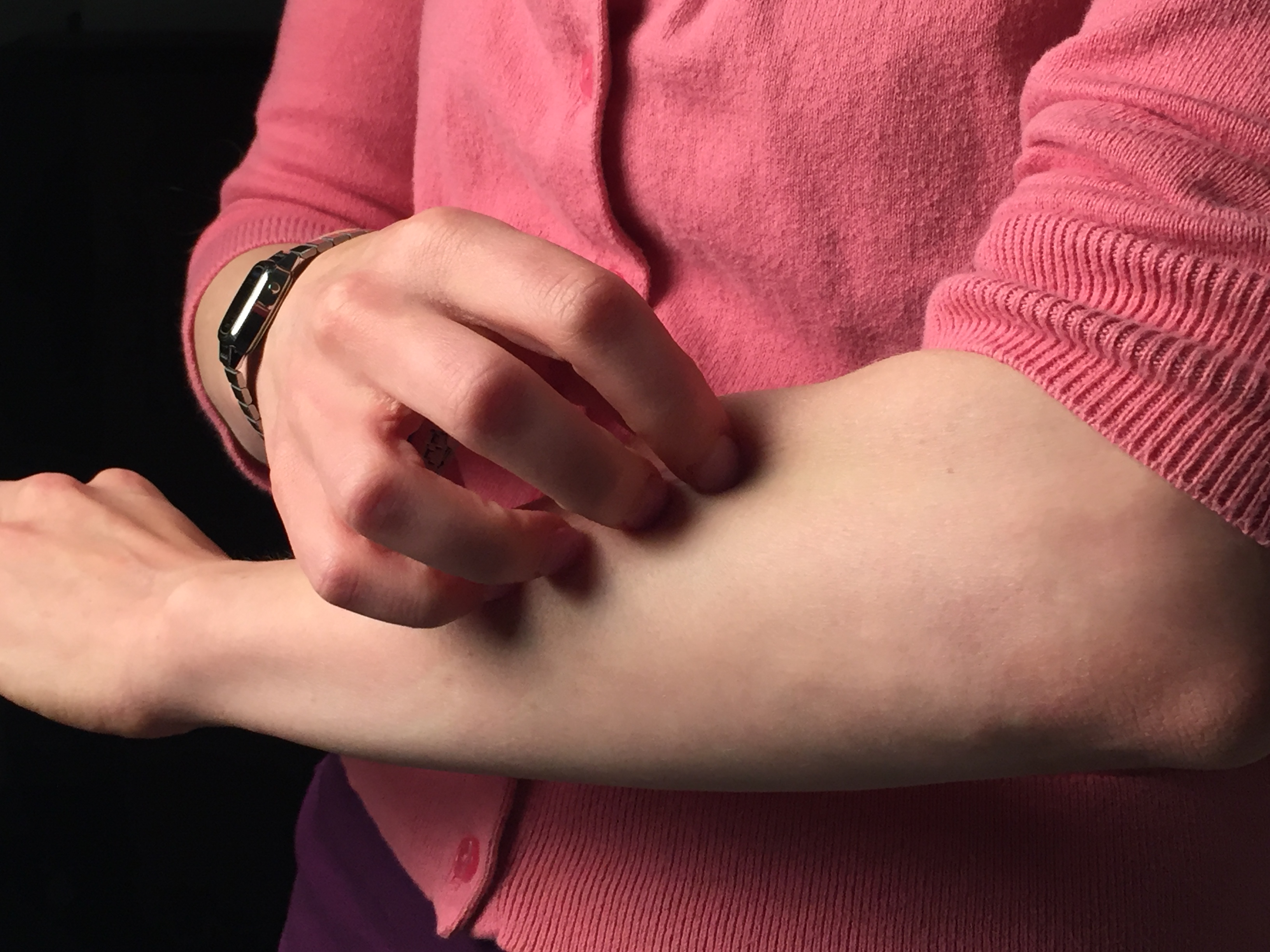
Clinical evidence consistently shows that patients who maintain a Loratadine regimen experience a drop in both the frequency and intensity of flare-ups. This sustained stability is reinforced by its active metabolite, desloratadine, which extends the period of symptom suppression while avoiding sedative side effects. Loratadine lessens the severity of itching, curbs hive formation, and facilitates a calm, itch-free night's sleep. Given its strong efficacy and safe profile, Loratadine is a core, first-line therapy for chronic urticaria, used before escalating treatment to stronger antihistamines or biologic agents, and is considered safe for long-term use under medical supervision.
Conjunctivitis Associated with Allergies
Allergic conjunctivitis is an eye reaction to allergens characterized by redness, watery discharge, and persistent itching. While antihistamine eye drops treat the problem locally, Loratadine offers a whole-body, systemic approach.

Taken orally, Loratadine works by blunting histamine-driven blood vessel dilation and leakage in the eye tissue (conjunctiva), effectively soothing the irritation and easing redness. This systemic action is especially useful when eye issues occur alongside other symptoms like a runny nose or itchy skin, allowing it to work in tandem with other therapies. Loratadine is also well-suited for long-term management of recurring eye issues, underscoring its broad usefulness as a cornerstone of comprehensive allergy management.
Loratadine for Dogs
Loratadine is sometimes used off-label by veterinarians to manage dermatitis, atopy, and other itchy skin conditions in dogs. By curbing histamine-driven inflammation, Loratadine helps ease scratching and skin irritation while providing a significant advantage over older drugs: it leaves the animal largely free of sedation.
However, because canine metabolism is different from that of humans, veterinary oversight is absolutely crucial for determining the correct, safe dosage. Extra caution is also required when the dog has liver disease or is receiving other medications. Ultimately, professional veterinary input is necessary to guarantee the treatment is both effective and safe.
Loratadine for Cough
Loratadine is not a primary cough medicine (antitussive) and should not replace dedicated cough suppressants for infections or non-allergic causes. However, it can be useful for a cough that is a secondary symptom of allergies, such as those caused by post-nasal drip or allergic airway inflammation.
By reducing nasal discharge and the resulting irritation of the throat, Loratadine can indirectly lessen the frequency of these coughs. It is most effective for coughs that develop as a consequence of rhinitis or sinus drainage. Pairing Loratadine with a decongestant can often boost its ability to control these allergic cough symptoms.
Off-Label Uses
Atopic Dermatitis Symptom Relief
The most burdensome symptom of atopic dermatitis is pruritus (itching). Loratadine helps manage atopic dermatitis is pruritus (itching) by antagonizing H1 receptors, which effectively breaks the debilitating itch-scratch cycle and reduces nighttime awakenings—all without causing drowsiness.

As a result, the irritated skin has a chance to settle, and the frequency of scratching and resulting skin damage wanes over time. Loratadine is particularly useful when the itch is exacerbated by inhaled allergens, and it works best when used as an adjunct therapy alongside moisturizers and topical anti-inflammatory creams. Its non-sedating profile is a key benefit, ensuring that the patient's daytime function and ability to learn are fully protected.
Allergic Asthma Adjunct Therapy
Loratadine is not a substitute for a controller inhaler and is not intended for rescue use during an asthma attack (bronchospasm). However, it can be a valuable part of a comprehensive, guideline-based asthma plan, especially for patients whose asthma flare-ups are linked to allergies and rhinitis. By cutting down the overall histamine load in the airway, Loratadine indirectly helps diminish allergic triggers. It works best when used alongside inhaled corticosteroids and as-needed bronchodilators, focusing on treating the rhinitis that fuels airway reactivity.
Food Allergy Symptom Management
For mild allergic reactions that are primarily confined to the skin, such as hives or itching following exposure, a peripheral H1 blocker like Loratadine can provide effective soothing relief. It serves as a useful resource for these localized flare-ups that lack systemic involvement. However, this medication should never replace an epinephrine auto-injector. If the reaction escalates to include gastrointestinal or respiratory symptoms, emergency protocols and epinephrine must be employed immediately as indicated by a professional action plan.
Reactions to Insect Bites and Stings
Loratadine effectively helps manage strong local skin reactions by working systemically to shrink the wheal (swelling), dial down the redness (erythema), and quell the itching caused by histamine and other mediators. Its rapid start and lasting effect help maintain daytime comfort.
For maximum relief, Loratadine should be combined with simple topical tricks like using ice packs, moisturizing creams, or mild steroid ointments to soothe surface inflammation. It is important to note that while Loratadine eases the local symptoms, the emergence of any systemic signs (like breathing difficulty or widespread symptoms) demands prompt medical evaluation.
Dosage and Administration
Standard Adult Dosage Guidelines
The standard adult regimen for Loratadine is simple and effective: a single 10 mg tablet taken orally once a day. This dose is sufficient to achieve near-complete H1 receptor blockade, sustaining the allergy relief for a full 24 hours.
For best results, consistency is important—try to take the dose at the same time each day for the duration of the allergy season or while symptoms are active. Users should never exceed the dosage instructions on the label unless specifically directed by a clinician. Furthermore, combination formulations that include the stimulant pseudoephedrine should be avoided as the evening approaches. Finally, remain aware of potential minor side effects, such as headache, dry mouth, or mild fatigue.
Pediatric Dosing Recommendations
Loratadine doses must be carefully adjusted based on age and body weight. To ensure proper measurement and increase adherence, especially for younger patients, liquid preparations and chewable tablets are often the preferred delivery methods. If there's any doubt about the correct dose, using weight-based calculations is recommended, particularly around age cutoffs where standard recommendations change.
Typical pediatric dosing guidelines are:
- Ages 2 to 5 years: 5 mg daily, typically given as a syrup or chewable tablet.
- Ages 6 to 11 years: The dose depends on weight: 10 mg daily if the child weighs 30 kg or more, and 5 mg daily if the weight is less than 30 kg.
- Ages 12 years and older: Patients move to the standard 10 mg adult dose daily.
Loratadine Maximum Dosage
For over-the-counter (OTC) purchases, the standard and safe limit for Loratadine is 10 mg within any 24-hour period.
While some clinicians may briefly increase the dose to 20 mg per day for difficult cases of hives (urticaria), this is an off-label use that requires close professional supervision due to significant variations in how individuals metabolize the drug. Before any dose increase, it is crucial to first verify the patient's liver function to ensure safety.
Special Considerations for Hepatic or Renal Impairment
Since Loratadine is processed by the liver into its active form, desloratadine, patients with significantly impaired liver function or severely compromised renal function (e.g., eGFR <30 mL/min/1.73 m²) risk drug buildup.
To prevent accumulation, it is recommended to space the doses apart. For many patients with impairment, a dose of 10 mg every other day should be considered. Furthermore, the use of CYP3A4 inhibitors (which can interfere with metabolism) should be avoided unless the expected therapeutic benefits clearly outweigh the associated risks.
Timing of Administration (With or Without Food)
Loratadine offers flexible timing for administration because food only mildly affects its absorption. You should aim to align the daily dose with your regular routine and the time when your symptoms are at their worst. For instance, an early dose is best if rhinitis peaks in the morning.
For consistent results, try to keep your routine consistent, regardless of whether you take the medication with food or on an empty stomach. However, it's wise to err on the side of caution and avoid grapefruit or Seville orange juice with any antihistamine, as they can sometimes interfere with drug metabolism. Finally, if your itching is worse at night, you can consider taking the medication in the evening, provided staying alert is not a critical concern at that time.
Best time to Take Loratadine
The best time to take your daily dose of Loratadine should be chosen to counter your peak symptom times, as allergy flare-ups often follow the body's clock. For instance, a morning dose is best if you suffer from daytime exposure to pollen and related sneezing, while an evening dose can help head off itching or congestion that flares up at night and disrupts sleep. The most essential rule is to choose a time and stick to it every day to maintain steady drug levels in your system for continuous relief.
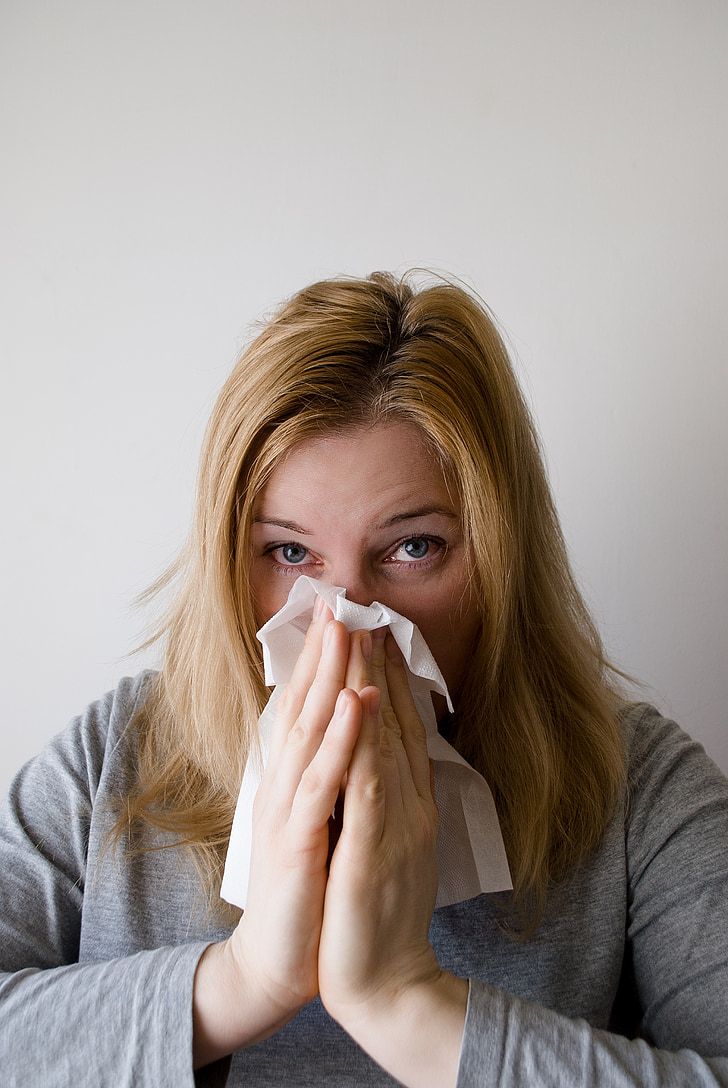
Loratadine Dosage by Weight
For children who are approaching the age when their dosage of Loratadine typically increases, weight-based calculations are especially important for ensuring safety and effectiveness. A practical rule is to administer 0.2 mg per kilogram daily, provided the total dose remains below the standard age-specific maximum (and below 10 mg per day for outpatient care), unless a clinician specifies otherwise.
For example, a child weighing 15 kg would be given 3 mg, which is rounded up to the standard 5 mg dose using syrup or chewable tablets. Similarly, a child weighing 28 kg would require approximately 5 mg to 6 mg, making the 5 mg daily dose the appropriate choice.
Loratadine for Dogs Dosage Chart
When using Loratadine for dogs (an off-label practice for skin conditions), only plain Loratadine products (those without pseudoephedrine) should be administered. Veterinary consultation is essential because concurrent health issues or other medications can compromise the animal's safety.
Dosage is calculated based on weight, often requiring tablets to be split to hit the target, which typically aligns with a goal of 0.2 mg per kilogram per day.
Typical Canine Dosing Guidelines (Daily)
- Under 5 kg: 2.5 mg
- 5 kg to 10 kg: 2.5 mg to 5 mg
- 10 kg to 20 kg: 5 mg to 10 mg
- 20 kg to 40 kg: 10 mg
- Over 40 kg: 10 mg to 20 mg
It is vital to avoid giving this medication to dogs with liver disease unless a veterinarian has explicitly approved its use.
Loratadine Dosage for Adults
The standard treatment for most allergy issues is a simple 10 mg Loratadine tablet taken once daily. If chronic hives (urticaria) do not respond to this regimen, it is time to escalate care. After three to seven days, if symptoms remain intrusive, a physician may try a supervised dose adjustment (increasing the Loratadine dose) or switch the patient to a different second-generation antihistamine with a distinct pharmacological profile. Generally, it's best not to mix Loratadine with other antihistamines.
Loratadine Maximum Dosage for Adults
The over-the-counter (OTC) limit for Loratadine is strictly set at 10 mg within any 24-hour period. Exceeding this maximum should be a rare exception and must be tightly monitored by a healthcare professional. This strict approach is necessary due to wide variations in individual metabolic rates and the potential for other medications to increase Loratadine's effects over time. While short-term, specialist-directed increases may be used for refractory hives, safety must remain the primary concern, especially for individuals with liver impairment or those taking multiple medications.
Administration in Special Populations
Elderly Patients: Dose Adjustments, Reduced Clearance
In older patient groups, the way the body handles Loratadine changes: reduced blood flow to the liver, slower kidney clearance, and altered protein binding can all stretch the drug's half-life. While an across-the-board dose reduction isn't always mandatory, it's wise to watch for drug buildup in frail individuals or those taking many medications (polypharmacy).
The standard recommended dose remains 10 mg once daily unless there is clear evidence of existing liver or kidney problems. Doctors typically follow a "start low and monitor" approach for this population, especially since drug interactions are more common in older patients juggling multiple medicines. Physicians should be particularly vigilant when the patient's regimen includes CYP3A4 inhibitors or other drugs that affect liver metabolism, and they should monitor for any signs of sedation or unusual fatigue, though these are uncommon.
Pregnant Women: Safety Profile, FDA Pregnancy Category
Loratadine is generally considered the preferred non-sedating antihistamine for treating rhinitis and hives in pregnant women, particularly during the second and third trimesters. While human data is limited, extensive examination—reflected by its former FDA Pregnancy Category B status—shows no consistent evidence of fetal harm when the drug is used at normal therapeutic doses.
Clinicians are advised to ensure the mother's benefit outweighs any potential risk while keeping exposure to a minimum. Pregnant individuals should avoid high-dose or extended-duration therapy without first securing a consultation with their healthcare provider. The drug's overall reassuring safety track record supports its use as a primary choice during pregnancy.
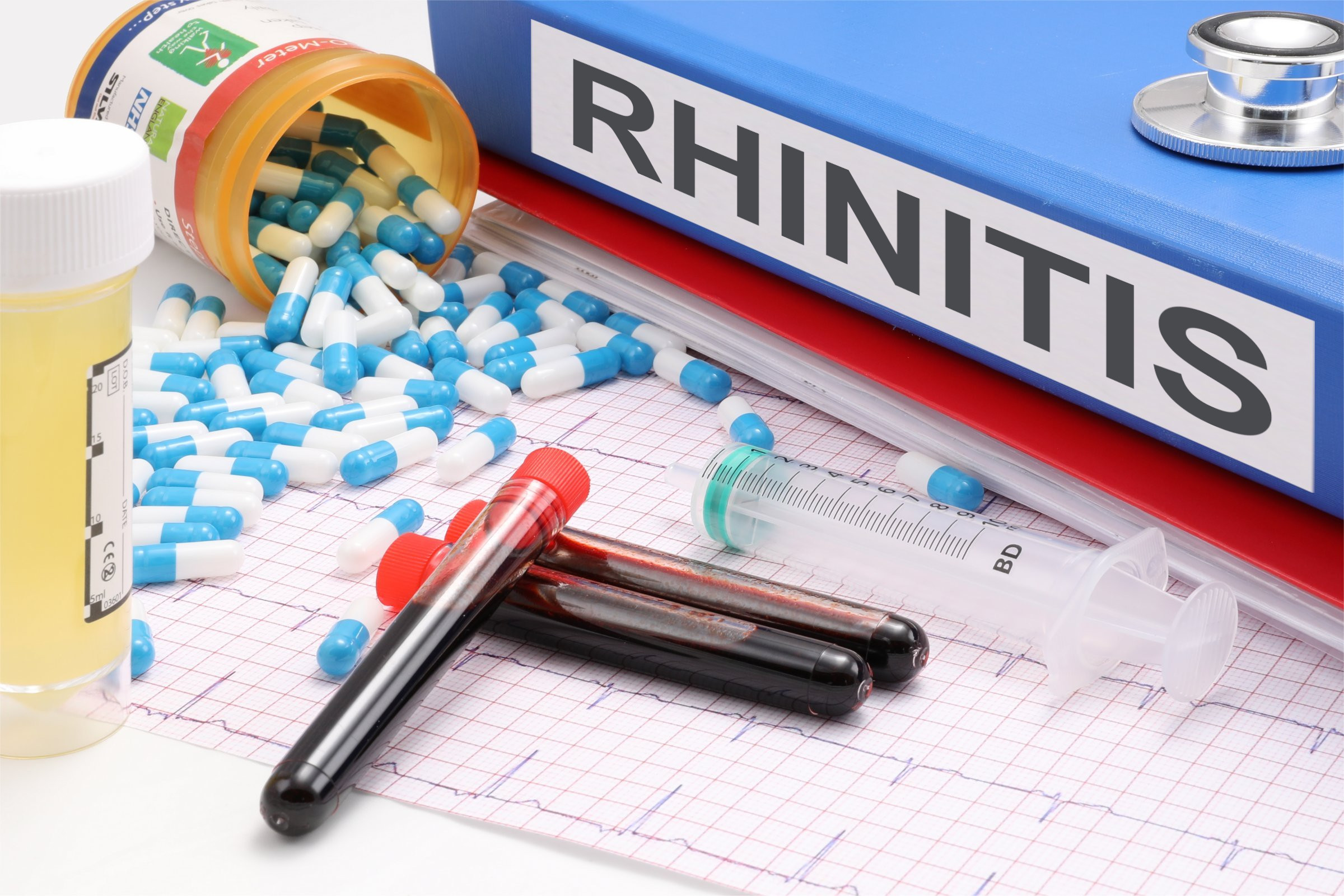
Nursing Mothers: Loratadine While Breastfeeding, Excretion in Breast Milk and Recommendations
When used under supervision and at standard dosages, Loratadine can be used while breastfeeding, as only trace amounts of the drug and its active metabolite, desloratadine, pass into the breast milk. These levels are typically too low to affect a healthy baby, though isolated reports of mild drowsiness or irritability have been noted.
Newborns or premature infants should be observed carefully for any signs of sensitivity, such as drowsiness or changes in feeding patterns. If treatment is necessary, a nursing mother can further reduce the infant's exposure by taking her daily dose right after a feeding. If the infant shows sensitivity to the medication, alternative treatments should be explored.
Children: Minimum Age Restrictions, Pediatric Safety Data
Loratadine has a well-established safety profile for children aged two years and older, with clinical trials confirming its tolerability. The drug's behavior in children mirrors that in adults, meaning it causes no sedation, which encourages high adherence among pediatric patients.
The product is approved for this age group and is available in convenient syrup and chewable tablet forms. The dose is carefully customized based on the child's age and weight to ensure effective, steady drug levels while avoiding harmful buildup. Side effects, such as a mild headache or somnolence, are infrequent and usually resolve on their own.
However, Loratadine is not considered safe for babies under two years of age because reliable data on their metabolism is lacking and highly unpredictable in that age group.
Side Effects
Overview of Tolerability
Loratadine has an excellent safety margin and is well-tolerated by most users. Any side effects that appear are typically mild and resolve on their own. Unlike older, first-generation antihistamines, Loratadine barely crosses the blood-brain barrier, which means it causes no drowsiness or mental clouding. Serious adverse reactions are extremely rare, cementing its profile as noticeably milder than its predecessors.
Common Side Effects: Headache, Dry Mouth, Fatigue, Drowsiness
Loratadine is a very well-tolerated allergy medication, and its side effects are typically mild, few and far between, rarely forcing a stop to treatment. The most common adverse reactions are a mild headache, a brief sensation of dry mouth, and a feeling of fatigue (reported by less than 3% of users). Occasionally, a slight touch of drowsiness may also occur.
These minor symptoms are usually dose-related and can often be managed simply:
- Headache can often be relieved by staying hydrated or adjusting the time you take the dose.

- Dry mouth can be managed by increasing fluid intake or using sugar-free lozenges.
- Fatigue is usually temporary.
Overall, these minor issues seldom interfere with daily life, which strengthens Loratadine’s reputation as a reliable and gentle option.
Less Common but Notable Side Effects: Palpitations, Rash, Dizziness
A small number of patients occasionally report more distinct adverse reactions, such as heart fluttering (palpitations), a rash, or a brief spell of dizziness. These symptoms often signal an underlying sensitivity or an interaction with other drugs that inhibit metabolism, leading to an elevated concentration of Loratadine in the bloodstream.
- Palpitations are more common in individuals who already have underlying heart issues.
- Skin reactions are rare but usually clear up without intervention.
- Persistent dizziness, especially if combined with changes in blood pressure, warrants attention.
If these symptoms flare up, it is generally best to stop the medication immediately and consult your healthcare team to confirm that the cause is not a genuine allergic reaction or a drug-to-drug interaction.
Serious Adverse Reactions: Severe Allergic Reaction, Liver Dysfunction
While extremely uncommon, severe allergic hypersensitivity to Loratadine is possible. If signs of anaphylaxis, swelling, or breathing difficulty occur, immediate emergency care is required.
Another rare concern is liver dysfunction, which has been sporadically observed, particularly in patients with pre-existing liver disease or those concurrently taking other hepatotoxic drugs. For these high-risk patients, it's prudent to monitor liver function during treatment. The emergence of symptoms like jaundice (yellowing skin), dark urine, or right-upper-quadrant abdominal pain requires prompt medical evaluation.
Despite these rare events, Loratadine maintains an exceptionally strong safety record when administered responsibly.
Loratadine Drug Interactions
Interactions with Alcohol and CNS Depressants
While Loratadine itself causes very little sedation, combining it with alcohol or other substances that slow brain activity (like sedative-hypnotics or anxiolytics) can, in sensitive individuals, amplify a slight dizziness or mild lag in coordination. If you need to maintain peak alertness—especially when working or performing critical tasks—it is best to steer clear of alcohol. Generally, a light drink isn't a problem, but simultaneous use of any central nervous system depressant requires increased vigilance.
Potential Interactions with Antifungal Medications and Antibiotics
Certain medications, particularly azole antifungals (like ketoconazole) and some macrolide antibiotics (such as erythromycin or clarithromycin), can interfere with the liver's CYP3A4 pathway that normally clears Loratadine from the body. This interference can cause Loratadine's blood levels to rise, making common side effects slightly more noticeable, though serious toxicity remains very rare.
Users should be alert for any increased drowsiness, light-headedness, or palpitations. While dose adjustments are seldom necessary, vigilance is crucial during prolonged use. If possible, patients should avoid high-dose Loratadine treatment when taking these interacting drugs.
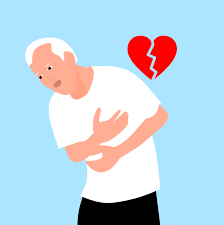
Interactions with Other Antihistamines or Decongestants
Mixing two different antihistamines is discouraged because it provides no added therapeutic benefit while significantly increasing the risk of side effects like dry mouth and drowsiness.
In contrast, pairing an antihistamine with a decongestant like pseudoephedrine offers a practical advantage, delivering dual relief for both allergy symptoms and nasal congestion. However, this combination must be used cautiously and reserved only for periods of truly significant congestion, as it is generally not advisable for patients with heart disease or hypertension.
Effects with CYP3A4 Inhibitors
Certain medications that block the CYP3A4 enzyme, such as the H2-blocker cimetidine, the antifungal fluconazole, and various protease inhibitors, can slow the breakdown of Loratadine, thereby increasing its level in the bloodstream.
While this increased exposure rarely leads to a serious problem, it can make side effects like fatigue or a mild sense of dizziness more noticeable.
If a patient must use these CYP3A4-blocking agents for an extended period, it's important to monitor liver function. If symptoms become persistent, consider switching to an antihistamine that is metabolized by a different pathway. When possible, creating a time gap between taking each medication can also help minimize this interaction.
Loratadine and Alcohol
While clinical studies generally show that Loratadine does not increase the cognitive impairment caused by alcohol, a prudent approach is still recommended due to individual variability. The combination may still lead to some reduction in alertness or slower reflexes.
To maintain clarity, it's advisable to limit alcohol intake while taking the medication. If any sedation does occur, you must avoid driving or operating machinery. Furthermore, patients with liver disease should abstain from alcohol entirely, as their slower metabolism could lead to dangerous drug buildup.
Loratadine vs Benadryl for Allergic Reaction
The choice between Benadryl (diphenhydramine) and Loratadine depends on the goal of treatment: immediate relief versus chronic control.
Benadryl is a first-generation drug that works fast and easily crosses the blood-brain barrier, making it highly sedating. It is the ideal choice for a quick-fire rescue to provide strong, immediate relief when an allergic reaction flares up dramatically.
Loratadine is a second-generation drug designed to stay in the system longer, keep you alert (non-sedating), and is geared toward everyday, chronic allergy control (prophylaxis).
In summary, Benadryl jumps in for on-the-spot relief, while Loratadine provides a reliable, day-long shield that keeps you comfortable without clouding your mind. However, it's vital to remember that nothing supersedes epinephrine as the first-line therapy for severe allergic reactions.
Contraindications
Known Hypersensitivity to Loratadine or Excipients
Loratadine must never be given to anyone with a confirmed allergy or hypersensitivity to the drug itself or to any of its inactive ingredients (excipients, dyes, or preservatives). Even minimal exposure in sensitized patients can trigger a severe reaction, which may manifest as hives, deep-tissue swelling (angioedema), bronchospasm, or even life-threatening anaphylaxis.
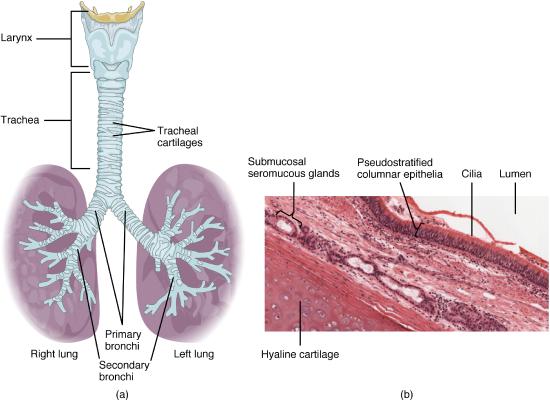
If any sign of a reaction appears, the medication must be stopped immediately. It is also important to note that cross-reactivity with its active metabolite, desloratadine, has occurred occasionally. When a physician oversees the regimen, they must consider alternative non-sedating antihistamines. Finally, a detailed check of all product components is crucial for patients with known allergies to tablet or syrup ingredients.
History of Severe Liver Disease Without Monitoring
In patients with impaired liver function, the body's ability to break down Loratadine is significantly reduced because the liver's cytochrome P450 activity is diminished. This causes the drug to linger longer in the bloodstream and accumulate, which dramatically increases the risk of side effects like sedation or cardiac arrhythmia.
Therefore, medical guidance strongly advises against using this drug in cases of liver impairment unless a doctor is directly supervising the treatment. To prevent toxicity, it is often essential to lower the dosage or use an alternate-day dosing schedule. This fine-tuning is especially critical if the patient is also taking other medications metabolized by the liver. For those on long-term therapy, periodic monitoring of liver enzyme levels is recommended.
Co-Use with Certain QT-Prolonging Agents
Loratadine should not be prescribed alongside any medication known to prolong the QT interval (which measures heart repolarization). While Loratadine rarely affects heart rhythm on its own, combining it with these drugs creates a theoretical additive risk that could trigger a dangerous cardiac event.
This includes a contraindication against combining Loratadine with macrolide antibiotics, antifungal medications, or Class IA and III anti-arrhythmic drugs. If simultaneous use is unavoidable, close electrocardiogram (ECG) monitoring is a necessary precaution. Patients, especially heart patients or seniors, need to be vigilant for red-flag signs such as palpitations, fainting (syncope), or dizziness, which require immediate medical evaluation.
The key takeaway is that active drug-safety monitoring is essential when multiple medications are used, especially in vulnerable patients.
Warnings and Precautions
Risk of Drowsiness in Sensitive Individuals
Although Loratadine is classified as non-sedating, individual differences in the brain's defenses (the blood-brain barrier) mean a small number of people may still experience mild, temporary drowsiness.
This sleepiness is usually related to the dose and is enough to interfere with tasks that require sharp cognitive focus or motor coordination. New users should pause and evaluate their reaction before engaging in activities like driving or operating machinery. Furthermore, the risk of drowsiness spikes dramatically if Loratadine is taken alongside alcohol or other sedatives. Even though this effect is rare, it signals the need for care when performing tasks that demand precision and sustained concentration.
Avoiding Activities Requiring Alertness if Affected
Even though it's rare, any patient who experiences unusual fatigue, light-headedness, or a slowdown in mental alertness while taking Loratadine is strongly advised to avoid driving, operating machinery, or performing any high-risk work tasks. These subtle central effects can undermine safety and performance.
It's wise to pause those activities until alertness returns. New users should pay close attention to any lingering symptoms as they begin treatment. If a patient cannot tolerate even slight sedation, it may be necessary to explore alternative antihistamines. Close monitoring throughout the therapy helps ensure a safe, smooth adjustment and prevents accidental errors caused by these subtle effects.
Potential Cardiac Effects in Overdose
A massive overdose of Loratadine can push its concentration in the blood past safe levels, potentially causing serious cardiac issues such as QT-interval prolongation, rapid heart rate (tachycardia), or palpitations. Although death from heart toxicity is extremely rare, managing an overdose must focus on cardiac rhythm monitoring and supportive care.
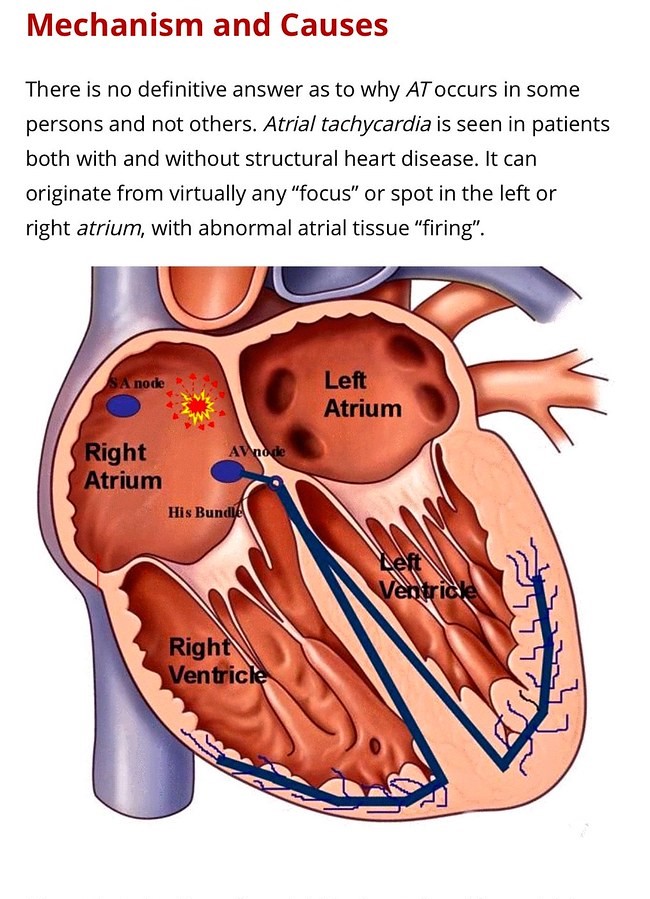
Interventions may include administering activated charcoal to limit absorption. Close monitoring of the patient's electrolytes and EKG is essential in every case. Because the drug binds tightly to proteins, treatments like hemodialysis are ineffective. Recognizing warning signs and acting swiftly is key to preventing the condition from escalating into heart failure or central nervous system complications.
Monitoring in Patients with Renal or Hepatic Impairment
When kidney or liver function is compromised, the body's ability to process Loratadine changes: the drug's half-life increases, meaning it can amass readily in the system.
For these individuals, a careful dosing regimen is essential to prevent toxicity while still providing allergy relief. Doctors should start the therapy at a reduced dose and only gently increase it based on the patient's response. To maintain a safe balance, regular monitoring of the patient's kidney and liver health is prudent. The medication can be kept from accumulating by adjusting the intervals between each dose.
Careful Administration Guidelines
Patients with Chronic Liver Disease
For patients with liver disease, the liver's slower drug clearance means the standard 10 mg once-daily regimen may lead to excessive drug levels. To prevent this, it's safer to begin with an every-other-day schedule or a reduced 5 mg daily dose to keep drug levels in check.
To ensure safety, it's crucial to monitor liver enzyme levels throughout continuous therapy. Clinicians should periodically reassess the dose's effectiveness to ensure the therapeutic benefits remain in harmony with safety, and stop the treatment if transaminase levels rise markedly. By staying vigilant, patients can achieve allergy relief over time without overtaxing the liver or causing drug buildup.
Patients with Renal Impairment
When the kidneys aren't filtering efficiently, Loratadine's metabolites stay in the body longer, increasing the chance of drug buildup and requiring a review of the dosing schedule. While a slight decrease in kidney performance rarely requires a change, a clinician must intervene to fine-tune the regimen once the impairment becomes moderate or severe.
For many patients with moderate to severe impairment, a 10 mg dose given every 48 hours (every other day) should be considered. This adjustment preserves the medication's effectiveness while lightening the load on the kidneys. Regular measurement of serum creatinine helps guide these dosage adjustments. It's also crucial to watch for any signs of toxicity, such as fatigue or palpitations.
Patients Taking Multiple Medications with Known CYP Interactions
Taking multiple medications (polypharmacy) can significantly change how Loratadine is metabolized by the liver's cytochrome P450 enzymes (CYP3A4 and CYP2D6).
Enzyme Inhibitors (like ketoconazole, cimetidine, or erythromycin) slow down Loratadine's breakdown, causing its half-life to lengthen and increasing the risk of side effects like drowsiness.
Enzyme Inducers (like rifampicin, carbamazepine, or phenytoin) speed up Loratadine's breakdown, potentially diminishing its therapeutic effect.
It is essential to stay alert for clues of an interaction, such as a noticeable increase in drowsiness or a drop in the medication's effectiveness. Regular medication reviews and appropriate dose adjustments are crucial for avoiding drug-interaction issues and keeping allergy symptoms well controlled.
Important Precautions
Avoid Exceeding Recommended Dose
It is vital to adhere strictly to the dose indicated on the label. Exceeding the recommended amount will not speed up relief; it only increases the body's exposure to the drug, thereby raising the chance of adverse events. Once the body's ability to process the medication is overwhelmed (pharmacokinetic saturation), side effects can erupt disproportionately.
To prevent an overdose, always use a calibrated liquid-measuring device for syrup. Also, avoid combining Loratadine with other antihistamines that work through similar mechanisms. If symptom control is still poor after several days, pause to reassess the situation instead of unilaterally increasing the dose.
Not a Substitute for Emergency Treatment of Anaphylaxis
Antihistamines are only supportive adjuncts; they cannot reverse the life-threatening symptoms of anaphylaxis, such as airway swelling (edema), dangerously low blood pressure (hypotension), or severe difficulty breathing (bronchospasm).

Epinephrine remains the gold-standard, first-line treatment for a severe reaction. Anyone with a known risk of anaphylaxis is strongly encouraged to keep their auto-injector immediately accessible. After epinephrine is administered, promptly call emergency services and continue to observe the patient, as a delayed, biphasic reaction could still occur.
Precaution in Patients with Cardiovascular Disorders
Antihistamine therapy, including Loratadine, must be approached with caution in individuals with heart disease, a known tendency toward arrhythmias, or uncontrolled high blood pressure. While Loratadine is usually well-tolerated, drug interactions or accumulating doses can sometimes bring on palpitations or provoke fast, irregular heart rhythms.
To minimize this risk, healthcare providers should carefully review the patient's entire medication list for any drugs that could prolong the QT interval or interfere with CYP enzyme metabolism. For patients whose blood pressure is unstable, it is essential to stick to single-ingredient preparations and steer clear of decongestant combinations (like pseudoephedrine). Finally, patients should be sure to report any fainting spells, chest pain, or prolonged palpitations immediately.
Precaution in Individuals with Phenylketonuria (If Formulation Contains Aspartame)
Some forms of Loratadine, such as chewable or orally disintegrating tablets, are sweetened with aspartame. For individuals with phenylketonuria (PKU), this means the phenylalanine load must be strictly controlled to prevent neurological damage.
It is critical to check the product label for any mention of aspartame or phenylalanine. When available, always choose phenylalanine-free alternatives. Any exposure to phenylalanine from the medication must be incorporated into the patient's total daily allowance, a process that should be guided by their clinical guidelines.
Overdosage
Symptoms of Overdose (Somnolence, Tachycardia, Headache)
Taking too much Loratadine can cause dose-dependent effects on both the central nervous system and the heart. Symptoms can range widely, from marked drowsiness to a racing pulse (tachycardia), often accompanied by throbbing headaches, dizziness, or irritability.
In severe cases, signs of overdose may include a potentially dangerous QT interval prolongation in the heart's rhythm or, paradoxically, severe agitation. Gastrointestinal discomfort, such as nausea, may also appear. This risk of toxicity rises considerably when the drug is taken along with other medications that interfere with its metabolism.
Emergency Management and Supportive Measures
The initial focus when managing a Loratadine overdose is supportive care aimed at the patient's immediate symptoms. The highest priorities are securing the airway and stabilizing blood pressure (hemodynamics). If the toxicity is severe, continuous cardiac surveillance and pulse oximetry are highly advisable.
Clinicians must quickly gather a detailed medication history to identify any other drugs taken that could interact or worsen the condition. It is also crucial to correct any electrolyte imbalances, as lingering disturbances can trigger or worsen heart rhythm problems. For patients presenting with a mixed overdose (involving multiple drugs), a toxicology consult should be considered.
Activated Charcoal and Gastric Lavage Considerations
When managing a Loratadine overdose, if the patient is stable and the airway is protected, giving activated charcoal promptly (ideally within one to two hours of ingestion) may help curb the amount of toxin absorbed.
Conversely, gastric lavage (stomach pumping) is rarely used; it's generally reserved for life-threatening ingestions and must be performed under specialist supervision, as the net gain must convincingly outweigh the hazards. It's important to note that hemodialysis is ineffective for removing Loratadine because the drug binds tightly to proteins and is widely distributed throughout the body.
Handling and Storage Precautions
Recommended Storage Conditions (Temperature, Light, Humidity)
To safeguard the chemical composition and sensory quality (like taste and aroma) of medications, always store them in a climate-controlled room at a stable temperature, unless the manufacturer specifies otherwise.
The ideal storage range is usually 20°C to 25°C, though brief excursions between 15°C and 30°C are typically acceptable. Keep the items clear of high humidity (meaning avoid bathroom cabinets) and direct sunlight. When provided, always keep the medication in its original packaging along with any desiccant (moisture-absorbing packet).
Shelf Life and Expiration Considerations
It's crucial to pay attention to the expiration date on the label, as this is your guarantee that the product remains both potent and safe. After this date, the medication may degrade, altering its effectiveness and potentially creating safety concerns. This risk is especially pronounced with liquid preparations, where opening the container can also introduce contamination.
For liquid syrups, be sure to note the date you first opened the bottle, as they often lose potency shortly after initial use. Immediately discard any containers that show signs of being compromised, such as broken seals, strange discoloration, or an unusual odor. When disposing of expired or compromised medication, always follow local regulations and avoid flushing it down the toilet unless specifically directed to do so.
Safe Handling for Healthcare Professionals and Patients
Adopting sound handling habits dramatically reduces the chance of dosing errors and contamination, which in turn boosts the reliability of the therapy. When measuring liquid medication, always use a calibrated syringe or cup, and never a kitchen spoon, to ensure spot-on accuracy.
To maintain safety and quality, fasten caps securely and stash all medications out of sight and reach of children and pets. Furthermore, keeping an accurate medication inventory is a key safeguard that helps curtail the risk of harmful drug interactions, especially when transitioning care between different providers. These safeguards ensure consistent clinical outcomes throughout the entire treatment.
Stop AllerG, Loratadine FAQ
- Can you take 2 Loratadine in 24 hours?
- Accidentally took 20 mg Loratadine?
- Can dogs take Loratadine?
- Is Loratadine safe for dogs?
- Can I give my dog Loratadine?
- How much Loratadine can I give my dog?
- Can you take Loratadine and Benadryl?
- What is the difference between Loratadine and Cetirizine?
- How long does Loratadine take to work?
- Does Loratadine raise blood pressure?
- Can you take Loratadine while pregnant?
- Can I take Loratadine and Benadryl?
- Is Claritin Loratadine?
- Is Loratadine drowsy?
- Is Loratadine a decongestant?
- Can I take Loratadine while pregnant?
- Can you take Benadryl and Loratadine together?
- Is Loratadine the same as Claritin?
- Can you take Cetirizine and Loratadine in the same day?
- Is Loratadine non drowsy?
- Loratadine vs Cetirizine for itching?
- Can you give dogs Loratadine?
- Can I take Benadryl and Loratadine?
- How long does it take for Loratadine to work?
- Can you take Loratadine with Benadryl?
- Is Loratadine safe in pregnancy?
- How much Loratadine for dogs?
- Difference between Cetirizine and Loratadine?
- Can you take Benadryl with Loratadine?
- Does Loratadine cause dementia?
- Can you take Loratadine and Cetirizine together?
- Can Loratadine cause high blood pressure?
- How long does it take Loratadine to work?
- Can I take Benadryl with Loratadine?
- Can you take Cetirizine and Loratadine together?
- Can Loratadine and Hydroxyzine be taken together?
- Can I take Loratadine and Cetirizine together?
- Can you take Benadryl and Loratadine?
- Does Loratadine keep you awake?
- Can you take Loratadine and Sudafed together?
- Does Loratadine help with cough?
- What happens if you take too much Loratadine?
- Can you take Diphenhydramine with Loratadine?
- Difference between Loratadine and Fexofenadine?
- Can you drink on Loratadine?
- Are Loratadine and Cetirizine the same?
- Are Loratadine and Desloratadine the same?
- Is Loratadine an antihistamine?
- Are Loratadine tablets non drowsy?
- Are Loratadine and Benadryl the same?
- Are Loratadine and Fexofenadine the same?
- Are Loratadine and Piriton the same?
- Are Loratadine and Claritin the same?
- Are Loratadine and Cetirizine Hydrochloride the same?
- Are Loratadine and Zyrtec the same?
- Are Loratadine and Montelukast the same?
- Can Loratadine be taken at night?
- Can Loratadine be taken twice a day?
- Can Loratadine be used for itchy skin?
- Can Loratadine and Chlorpheniramine be taken together?
- Can Loratadine and Hydroxyzine be taken together?
- Can Loratadine cause drowsiness?
- Can Loratadine make you sleepy?
- Can Loratadine cure cough?
- Can Loratadine cause high blood pressure?
- Can Loratadine stop itching?
- Can Loratadine cause constipation?
- Can Loratadine be used for cough?
- Can Loratadine cause dizziness?
- Can Loratadine and Piriton be taken together?
- How Loratadine works?
- How Loratadine works in the body?
- Loratadine how many times a day?
- Loratadine how often to take?
- Loratadine how much to take?
- Loratadine how fast does it work?
- Where is Loratadine metabolized?
- Where does Loratadine come from?
- Where is Loratadine manufactured?
- Where is Loratadine absorbed?
- Where is Loratadine excreted?
- Loratadine which class of drug?
- Loratadine which generation antihistamine?
Can you take 2 Loratadine in 24 hours?
No you shouldn’t take two Loratadine tablets within 24 hours. For adults the usual dose is a 10 mg tablet a day. Exceeding that amount can raise the likelihood of side effects such, as drowsiness, headache or a rapid heartbeat.
Accidentally took 20 mg Loratadine?
Accidentally swallowing a 20 mg dose of loratadine is unlikely to cause harm for adults though it can still bring on a dry mouth, light‑headedness or a touch of sleepiness. Drink plenty of water. Keep an eye out for any symptoms. If you notice palpitations, confusion, or severe drowsiness seek advice away.
Can dogs take Loratadine?
Yes—if a veterinarian is overseeing the treatment, dogs may receive loratadine, which is sometimes employed to allergies or persistent itchiness. Still, the right dosage is dictated by the animal’s size, weight and health status making it essential to never administer the drug without a vet’s clearance.
Is Loratadine safe for dogs?
Veterinarians generally regard loratadine as safe for dogs. It must not be administered to animals with liver disease or those already taking medications. Additionally any formulation that contains pseudoephedrine or other decongestants should be avoided, as those ingredients can be toxic to dogs.
Can I give my dog Loratadine?
You should only give your dog Loratadine if a veterinarian has specifically recommended it. The vet will calculate the dose taking your dog’s weight and overall health into account. Under no circumstances should you hand over‑the‑counter human allergy medication to a pet without guidance.
How much Loratadine can I give my dog?
The usual dose, for dogs is 0.2 mg per pound (≈0.5 mg per kilogram) a day though the exact amount can differ depending on the animal’s health. It’s wise to verify the dosage and its suitability, with a veterinarian before administering it.
Can you take Loratadine and Benadryl?
In some cases, pairing loratadine with Benadryl (diphenhydramine) is off the table unless a clinician explicitly signs off on it. Both belong to the antihistamine family and taking them together tends to amplify drowsiness, dry mouth, and mental fuzziness without delivering any therapeutic benefit.
What is the difference between Loratadine and Cetirizine?
Both Loratadine and Cetirizine belong to the second‑generation class of antihistamines. They are commonly turned to for easing allergy symptoms. Loratadine usually keeps the drowsiness factor, while Cetirizine tends to act a bit and can deliver a slightly stronger bite, on the symptoms, though it carries a higher likelihood of inducing sleepiness.
How long does Loratadine take to work?
Loratadine usually starts to work about one to three hours after the tablet is ingested, reaching its peak between eight and twelve hours later. The effect hangs around for a twenty‑four hours so a single daily dose does the trick.
Does Loratadine raise blood pressure?
Loratadine is generally considered safe for people with well-managed high blood pressure because it typically does not raise blood pressure. However, you must avoid any combination medications that include pseudoephedrine, as that ingredient can increase both your heart rate and blood pressure.
Can you take Loratadine while pregnant?
Loratadine is generally viewed as safe to use during pregnancy, particularly once a woman reaches the third trimester. Nonetheless, any expectant mother should consult her healthcare provider before taking it to ensure it's appropriate for her specific health situation.
Can I take Loratadine and Benadryl?
Combining these two antihistamines is generally discouraged because they both target the same histamine receptors. Using them simultaneously offers no extra therapeutic benefit but significantly heightens the risk of side effects like pronounced drowsiness and dry mouth. Always consult a physician before mixing any antihistamines.
Is Claritin Loratadine?
Yes Claritin is simply the brand name, for loratadine. Both harbor the compound and tend to relieve common allergy symptoms—sneezing, itching and a runny nose—quite similarly.
Is Loratadine drowsy?
Loratadine is often described as a non‑drowsy antihistamine because it seldom induces sleepiness, especially when set against drugs such as diphenhydramine. Nonetheless, a small number of individuals may still experience drowsiness.
Is Loratadine a decongestant?
No, Loratadine isn’t a decongestant. It’s an antihistamine that eases allergy symptoms by blocking histamine receptors. Some combination products—Claritin‑D, for example—pair Loratadine with the decongestant pseudoephedrine.
Can I take Loratadine while pregnant?
Throughout pregnancy— during the third trimester—Loratadine is generally regarded as safe. It falls into the category of antihistamines used to ease allergy symptoms. Still a quick check with your healthcare provider is the way to ensure the drug suits your health situation.
Can you take Benadryl and Loratadine together?
The general consensus is to avoid combining Benadryl (diphenhydramine) and Loratadine. Because both are antihistamines, taking them together won't provide more relief but will instead worsen side effects like sleepiness, dry mouth, and dizziness. Always consult a healthcare professional before mixing these two medications.
Is Loratadine the same as Claritin?
Yes, Claritin is simply the brand-name version of the generic drug loratadine. They contain the same active ingredient and provide identical relief for the common allergy symptoms, including sneezing, itchy eyes, and a runny nose.
Can you take Cetirizine and Loratadine in the same day?
It's generally discouraged to take Cetirizine and Loratadine on the same day. Since both medications are similar second-generation antihistamines and work the same way, combining them will not provide extra allergy relief but significantly increases the risk of side effects such as fatigue, headaches, and dry mouth.
Is Loratadine non drowsy?
Loratadine is classified as a non‑drowsy antihistamine. Compared with antihistamines, it is less likely to induce sedation, though a few individuals might still notice a hint of tiredness.
Loratadine vs Cetirizine for itching?
Loratadine and Cetirizine are both effective at relieving allergy-related itching. However, Cetirizine is generally more potent for skin itch, though it's also more likely to cause drowsiness. If you need to remain alert during the day, Loratadine is the preferred choice.
Can you give dogs Loratadine?
Loratadine can be given to dogs, provided it is supervised by a veterinarian. Vets sometimes use this medication to alleviate symptoms of skin conditions, such as persistent itching or irritation and acute flare-ups. Never give a dog loratadine without first consulting a veterinarian to establish the appropriate dose and confirm its safety.
Can I take Benadryl and Loratadine?
It's best not to take Benadryl and Loratadine together unless your doctor says it's acceptable. Because both are antihistamines, combining them can increase side effects like sleepiness, dry mouth, and confusion, without making the allergy relief any better.
How long does it take for Loratadine to work?
Loratadine starts working about one to three hours after you take a dose, and its strongest effect usually peaks between eight and twelve hours. Because it controls symptoms for up to 24 hours, taking just one pill a day is usually sufficient.
Can you take Loratadine with Benadryl?
Combining Loratadine (Claritin) and Benadryl (diphenhydramine) isn't recommended. Since both drugs target the same histamine receptors, taking them together doesn't improve relief but drastically increases the risk of side effects like excessive drowsiness and feeling dizzy or unbalanced.
If your symptoms persist despite taking Loratadine, you should consult a healthcare professional before you try adding a second antihistamine.
Is Loratadine safe in pregnancy?
Loratadine is typically considered safe for pregnant women when used according to instructions, as current studies have not found any evidence of risk to the fetus. Nevertheless, it is always recommended to consult your healthcare provider before starting any new medication during pregnancy.
How much Loratadine for dogs?
For dogs, veterinarians usually prescribe Loratadine at a dosage of about 0.2 mg per pound (or approximately 0.5 mg per kilogram) daily. However, the precise dosage must be determined by a veterinarian, as it needs to be adjusted based on the dog's size and medical condition.
Difference between Cetirizine and Loratadine?
Both Cetirizine (Zyrtec) and Loratadine (Claritin) are second-generation antihistamines used to treat allergies, but they have different strengths and side effects. Cetirizine is generally considered slightly more potent, especially for skin allergies, and acts faster. In contrast, Loratadine causes less drowsiness, making it the better choice for use during the day.
Can you take Benadryl with Loratadine?
Most doctors advise against mixing Benadryl and Loratadine because they both work to calm allergy symptoms through the same mechanism (doubling up on antihistamines). Combining them often just increases side effects like drowsiness without offering any additional relief.
Does Loratadine cause dementia?
Based on current evidence, there is no link between taking loratadine and developing dementia. Unlike older first-generation antihistamines, loratadine has difficulty crossing the blood-brain barrier. Therefore, when used properly, it is much less likely to cause issues with memory or thinking.
Can you take Loratadine and Cetirizine together?
You generally should not combine Loratadine and Cetirizine. Since both are second-generation antihistamines that work by blocking the same histamine receptors, taking them together won't give you extra relief but will only increase your risk of side effects like drowsiness, headache, and dry mouth.
Can Loratadine cause high blood pressure?
Loratadine by itself generally does not cause a significant rise in blood pressure. However, combination products like Claritin-D, which include both loratadine and the decongestant pseudoephedrine, can increase both blood pressure and heart rate. People with hypertension (high blood pressure) should choose the plain loratadine formula and consult with a doctor before beginning the medication.
How long does it take Loratadine to work?
Loratadine typically begins to relieve allergy symptoms within one to three hours of being taken, with its maximum effect appearing around eight to twelve hours. Since the relief can last for up to 24 hours, a once-daily dose is a convenient dosing schedule.
Can I take Benadryl with Loratadine?
Generally, you should avoid taking Benadryl (diphenhydramine) and Loratadine together. As both are antihistamines, combining them increases the chance of side effects like drowsiness, confusion, and dry mouth, while providing no extra benefit for controlling allergies.
Can you take Cetirizine and Loratadine together?
You should not take Cetirizine and Loratadine together. Both are in the antihistamine class and work in the same way, so combining them only increases the risk of side effects, especially drowsiness, without improving allergy relief.
Can Loratadine and Hydroxyzine be taken together?
You should not mix Loratadine and Hydroxyzine unless a doctor has specifically told you to. Hydroxyzine is a first-generation antihistamine known for causing significant drowsiness, so combining it with Loratadine can greatly increase sleepiness and hurt your ability to concentrate.
Can I take Loratadine and Cetirizine together?
It's not a good idea to take Loratadine and Cetirizine on the same day. Since both are antihistamines, combining them just increases the total dosage and raises the risk of an accidental overdose without providing any better allergy relief.
Can you take Benadryl and Loratadine?
Generally, it is advised not to take Benadryl and Loratadine together. Because both medications are antihistamines, using them simultaneously can increase side effects such as drowsiness, dizziness, and reduced alertness. You should consult a doctor before combining these two drugs.
Does Loratadine keep you awake?
While the vast majority of people find that the non-drowsy antihistamine Loratadine does not affect their sleep or alertness, a few individuals might occasionally experience restlessness or a feeling of being "buzzed." Overall, it is considered safe and effective for daytime use.
Can you take Loratadine and Sudafed together?
You can take Loratadine with Sudafed (pseudoephedrine) to relieve both allergy symptoms and nasal congestion, but it should only be done under the guidance of a healthcare provider. Individuals who have existing heart or blood pressure problems must speak with a physician before starting this combination.
Does Loratadine help with cough?
Loratadine can help to quiet a cough, but only if that cough is caused by an allergic reaction or constant post-nasal drip. This relief happens because the medication blocks histamine and helps calm irritation in the nasal passages. However, if the cough is from an infection or any other non-allergic cause, Loratadine will not provide relief.
What happens if you take too much Loratadine?
Taking too much Loratadine (an overdose) can cause symptoms like a headache, a fast heartbeat (tachycardia), drowsiness, or increased irritability. In more serious instances, it might lead to confusion or an abnormal heart rhythm. If you suspect an overdose, you should seek immediate medical attention.
Can you take Diphenhydramine with Loratadine?
You should not combine loratadine and diphenhydramine (Benadryl) without a doctor's instruction. Since both medications are antihistamines, taking them together can cause increased side effects such as sleepiness, dizziness, and difficulty concentrating.
Difference between Loratadine and Fexofenadine?
You should not combine loratadine and diphenhydramine (Benadryl) without a doctor's instruction. Since both medications are antihistamines, taking them together can cause increased side effects such as sleepiness, dizziness, and difficulty concentrating.
Can you drink on Loratadine?
It's best to avoid alcohol while taking Loratadine. Although Loratadine is known as a non-drowsy antihistamine, combining it with alcohol can increase any slight feelings of sleepiness or dizziness and reduce your alertness. By not drinking, you help ensure your safety and keep the medication working effectively.
Are Loratadine and Cetirizine the same?
No, Loratadine (Claritin) and Cetirizine (Zyrtec) are not the same drug, even though they are both antihistamines that treat allergy symptoms. The key differences are that Cetirizine usually acts faster and is more likely to cause noticeable drowsiness, while Loratadine is mostly non-sedating and is therefore better for use during the day.
Are Loratadine and Desloratadine the same?
While Loratadine and Desloratadine are very similar, they are not the same medication. Desloratadine is the active substance (or metabolite) produced by the body as it processes Loratadine. Both are antihistamines used to relieve allergy symptoms, but Desloratadine usually has a quicker onset and a longer duration of action.
Is Loratadine an antihistamine?
Yes, loratadine is classified as a second-generation antihistamine. It works by blocking histamine receptors to effectively relieve common allergy symptoms like sneezing, a runny nose, and itchy/watery eyes.
Are Loratadine tablets non drowsy?
Yes, Loratadine tablets are widely known as non-drowsy. Compared to older antihistamines, they cause almost no sleepiness, making them safe for daytime use without affecting your alertness.
Are Loratadine and Benadryl the same?
Loratadine and Benadryl are not the same drug. Loratadine is a newer, long-acting antihistamine that does not cause sleepiness, while Benadryl contains diphenhydramine, an older-generation antihistamine that is short-acting and frequently causes drowsiness.
Are Loratadine and Fexofenadine the same?
Although both loratadine (Claritin) and fexofenadine (Allegra) are considered non-drowsy antihistamines, they are different medications with unique chemical structures, how the body processes them, and slightly different risks of causing sleepiness. In practice, fexofenadine is generally associated with an even lower chance of drowsiness than loratadine.
Are Loratadine and Piriton the same?
No, Loratadine and Piriton (which contains chlorpheniramine) are not the same medication. Piriton is a first-generation antihistamine that commonly causes drowsiness, while Loratadine is a second-generation antihistamine specifically designed to be minimally sedating.
Are Loratadine and Claritin the same?
Yes, Claritin is simply the brand name for the drug loratadine. They contain the exact same active ingredient and provide identical relief for common allergy symptoms like sneezing, itching, and watery eyes.
Are Loratadine and Cetirizine Hydrochloride the same?
No, Loratadine and Cetirizine hydrochloride are not the same drug. Although they are both second-generation antihistamines, their chemical structures are different, which affects their side-effect profiles. Cetirizine tends to start working faster and is more likely to cause drowsiness compared to Loratadine.
Are Loratadine and Zyrtec the same?
No, they are not the same. Zyrtec contains the active ingredient cetirizine, while loratadine (found in Claritin) belongs to a different type of antihistamine. Both effectively treat allergy symptoms, but loratadine is much less likely to cause drowsiness than Zyrtec.
Are Loratadine and Montelukast the same?
No, Loratadine and Montelukast are not the same and cannot be swapped. Loratadine is an antihistamine that relieves allergies by blocking histamine receptors, while Montelukast is a leukotriene receptor antagonist that works by reducing inflammation and is primarily used to treat asthma and chronic allergic rhinitis.
Can Loratadine be taken at night?
Yes, you can certainly take loratadine (Claritin) at night. Even though it's a non-drowsy medication, many people choose an evening dose for convenience or to help manage their allergy symptoms. The key is to take the medication at any time of day, as long as you maintain a 24-hour interval between doses.
Can Loratadine be taken twice a day?
Taking more than the recommended dose of Loratadine daily is not advised. For adults, the standard regimen is 10 mg once a day because the medication remains effective for a full 24 hours. Taking a higher amount won't make your allergy symptoms any better but will only increase your risk of side effects.
Can Loratadine be used for itchy skin?
Can Loratadine and Chlorpheniramine be taken together?
You should generally not combine loratadine (Claritin) with chlorpheniramine (Piriton) unless a doctor specifically tells you to. Both are antihistamines, so taking them together usually only increases the risk of side effects like drowsiness and dry mouth without giving you any extra relief for your allergies.
Can Loratadine and Hydroxyzine be taken together?
You should avoid taking Loratadine with Hydroxyzine unless a healthcare professional is managing your treatment. Since Hydroxyzine is a sedating antihistamine, combining it with Loratadine can dangerously increase drowsiness, cause confusion, or impair your ability to concentrate.
Can Loratadine cause drowsiness?
Loratadine is typically classified as non‑drowsy. A minority of individuals may notice a sense of sleepiness. Such an effect is rare and less marked than the sedation produced by first‑generation antihistamines, like diphenhydramine or chlorpheniramine.
Can Loratadine make you sleepy?
Loratadine is classified as a non-drowsy antihistamine, meaning it rarely causes sleepiness. However, a small number of people, particularly those sensitive to antihistamines or those who take more than the recommended dose, may occasionally experience some drowsiness, fatigue, or dizziness.
Can Loratadine cure cough?
Loratadine does not directly cure a cough. Its primary benefit is easing coughs that are caused by allergies or post-nasal drip. If your cough is the result of an infection, asthma, or another respiratory problem, you will need a different form of treatment.
Can Loratadine cause high blood pressure?
Loratadine by itself generally has little to no effect on blood pressure. However, when it is combined with pseudoephedrine (as in products like Claritin-D), that combination can cause an increase in both blood pressure and heart rate. Therefore, individuals with hypertension (high blood pressure) should always consult their doctor before taking these combination medicines.
Can Loratadine stop itching?
Yes, loratadine (Claritin) is effective at stopping the itching caused by reactions like hives or insect bites. It works by blocking histamine, the body chemical responsible for triggering itching, redness, and swelling during an allergic response.
Can Loratadine cause constipation?
While constipation is not a common side effect of Loratadine, it can happen in rare cases. More frequent side effects reported by users include headaches, dry mouth, or general fatigue. If you experience persistent constipation, you should consult a healthcare professional.
Can Loratadine be used for cough?
Loratadine can be helpful for a cough, especially if it's caused by post-nasal drip or throat irritation due to allergies. However, it is not effective for coughs resulting from infections or ongoing respiratory diseases like bronchitis.
Can Loratadine cause dizziness?
While generally uncommon, some people may occasionally feel light-headed when taking loratadine. This side effect is much more likely to occur if the medication is taken along with alcohol, sedatives, or any other substances that slow down the central nervous system.
Can Loratadine and Piriton be taken together?
You should generally not take Loratadine and Piriton (chlorpheniramine) at the same time unless a doctor specifically tells you to. Since both are antihistamines, combining them can greatly increase side effects like severe drowsiness, dry mouth, or a confused, hazy feeling.
How Loratadine works?
Loratadine works by blocking the H1 receptors that histamine attaches to in your body. When you have an allergic reaction, histamine is released and causes symptoms like sneezing, itching, and a runny nose. By stopping this histamine action, loratadine provides relief from those irritating allergy symptoms.
How Loratadine works in the body?
Loratadine works by targeting H1 receptors mainly outside of the brain and rarely crosses the blood-brain barrier. This focused action allows the drug to effectively stop the allergic response, preventing sneezing, itching, and watery eyes without causing drowsiness.
Loratadine how many times a day?
Most people take loratadine (Claritin) once a day. The standard adult dose is a 10 mg tablet, which provides allergy relief for a full 24 hours. Taking it more often will not increase its effectiveness but could increase your risk of side effects.
Loratadine how often to take?
To ensure consistent allergy relief, you should take Loratadine once every 24 hours. This schedule helps keep the level of the antihistamine steady in your system.
Loratadine how much to take?
The usual dose of loratadine (Claritin) for adults is a 10 mg tablet once a day. For children, the dosage is lower and based on their age and weight; kids aged two to five years typically take a 5 mg dose. Always follow the specific instructions from a healthcare professional or the directions on the medication package.
Loratadine how fast does it work?
Loratadine generally starts to work between one and three hours after you take it. The strongest effect (its peak) usually occurs within the eight-to-twelve-hour range, and the resulting allergy relief can last for a full 24 hours.
Where is Loratadine metabolized?
Loratadine is primarily broken down in the liver by the Cytochrome P450 enzyme system, mainly the CYP3A4 and CYP2D6 enzymes. This process converts Loratadine into its active form, desloratadine, which is responsible for much of the drug's allergy-relieving effect.
Where does Loratadine come from?
Loratadine is a synthetic drug (meaning it is created entirely in a lab) and is not derived from a natural source. It was developed by scientists specifically to be a long-acting antihistamine that would not cause drowsiness.
Where is Loratadine manufactured?
Loratadine is manufactured globally by numerous companies, with major production centers located in the United States, Europe, India, and China. The exact origin of a particular batch depends on the brand and the specific distributor.
Where is Loratadine absorbed?
When you take a Loratadine pill by mouth, it's quickly absorbed from your digestive system, with the highest concentration in your bloodstream typically occurring within one to two hours. While eating might slightly delay this absorption, it does not change how effective the drug is.
Where is Loratadine excreted?
The body primarily removes loratadine (Claritin) and its breakdown products through urine and feces. The drug's elimination half-life is about 8 to 14 hours, which is why it's convenient to take it once a day.
Loratadine which class of drug?
Loratadine is a type of antihistamine known as a histamine H1-receptor antagonist. It works by blocking the action of histamine, a substance that rushes into your tissues during an allergic reaction, thereby calming symptoms like sneezing and itching.
Loratadine which generation antihistamine?
Loratadine, a second‑generation antihistamine was engineered to keep drowsiness to a minimum and, to zero in on histamine receptors making it especially handy, for handling allergy symptoms during the day.

